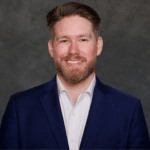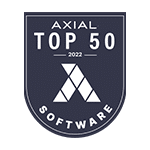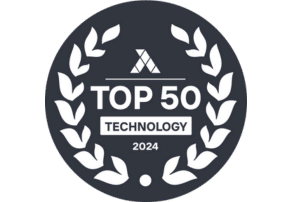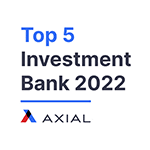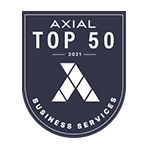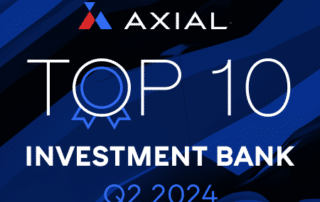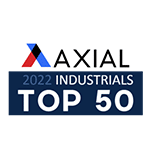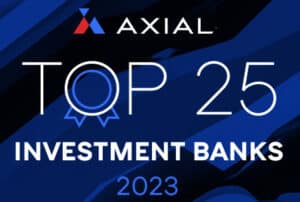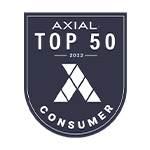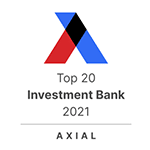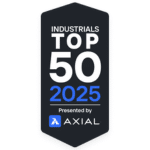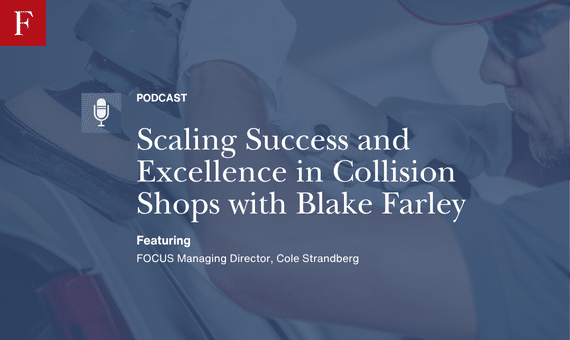
Scaling Success and Excellence in Collision Shops with Blake Farley
On this week’s episode, Cole Strandberg chats with Blake Farley, Executive Vice President of Operations at Quality Collision Group and former partner at Relentless Collision, one of the most forward-thinking MSOs in the industry. Blake has scaled operations, led successful M&A activity, and built strong shop cultures—and he talks about what separates elite operators from the rest. Whether you run one location or many, this is a conversation worth leaning into.
Listen and Follow The Collision Vision.
Cole Strandberg: I was telling you before we hit record, you have just this infectious positivity about you. So I’m looking forward to a great conversation with you as well. We’re getting the week started off awesome. At the time of this recording, it is Monday morning and pouring rain where I am. So looking forward to, to shedding some light on some stuff here this morning. Firstly, Blake, man, your story is pretty cool. I think where we first got encountered you were with a a national consolidator and then with a start up kind of growing consolidator and now with a really established growing consolidator. But would love to hear your story in your own words.
Blake Farley: Yeah, Cole, man, it was a pleasure bumping into you. And now the circle that we run with, we share a lot of the same friendships, and that’s both professional and personal. Yeah, man, I grew up in ADRP environment and ran that. That’s all I knew. And then had the opportunity to be a part of Relentless Collision. And it’s like maybe three years ago you had Tom McGowan on your radar and he and I had worked together for the past 25 years or so. So Relentless Collision was a brainchild to really work for the consumer. And so we really found that there was an opportunity in the North Carolina market to really pursue the top level OEM certs. And again, we just decided, hey, we were going to work for the consumer, repair the car exactly the way the manufacturer mandates. And that’s what we, that’s what we’ve done. I will tell you that we did not do it alone. We did have to or I did reach out to became a member of Carolina’s Collision Association. And that was basically what turbocharged the growth of the team where I was able to reach out and learn how to properly create a repair plan for a modern day vehicle. And I share this story often is that having been in the business or the industry for 20 plus years, I thought I knew how to do this. And then after stepping out of my bubble, so to speak, and interacting with the association, becoming more and more involved, becoming a member of SCRS and then bumping into folks like yourself, Cole and other top tier operators in the collision space, which you had Kyle Bradshaw on your your show along with many others. But Michael, Kyle Bradshaw, you know, instrumental in playing the role of a shepherd, bringing A-Team along the journey of first understanding the car, what the car needs and all the documents. It’s not just the repair procedures, let’s just say the owner’s manual, things such as that on what you need to do to properly repair the car and the car’s telling the story. All we’ve got to do is listen and use the right documents to support what we’re doing. So when those guys jumped in and started teaching myself and the team, it was not like something that had to be forced across the team. They were very hungry for it because all the entire team came from ADRP background and enjoyed the thought or love the thought of working exclusively for the vehicle owner. And so Relentless Collision just started gaining momentum. Once we learn how to write the repair plan, then we were in a position to learn how to negotiate to get paid. Once we start achieving those wins, then it was the whole dynamic change. To be honest, Cole, it went from you’re really working hard trying to get it right to hey man, we’re getting it right. And then it became then an awareness on the details inside the operations team where we were lacking. You know, for example, when you take the car part, you’ve got electrical connectors. I’m sure there’s a lot of shops today that just leave those electrical connector connectors dangling and just like you said, they’re probably pulled outside in the rain right now. You know, those are the small details that hey man, you got to bag those. I, you know, bag those connectors. Each OEM has a particular technique on how you should do that. And so that’s when the education really begun to get real detailed. And in my opinion, we are still on the journey of becoming a, you know, 100% professional. My buddy Barry Dorn says, hey, man, you know, that journey, you never arrived. You’re always pursuing, you know, the the knowledge to keep us up to speed. And so, yeah, man, I had a blast so far. And then now working with Quality Collision Group, that has been an absolute joy that you know, when we joined Quality Collision Group, it was certainly with the endeavour to do something different. And I started out, you know, say, hey man, Quality Collision Group is a different MSO. And so moreover, you know, that is being proven out. You can just look at the folks that are on the team. And that is one thing I really love is that I do know this. If you, if you just silo yourself and your business and you don’t step outside of it, let’s just say today you’re up to speed. Well, if you siloed today and you continue that track for the next 6 months, six months from now, you’re going to be behind. And what is fantastic is now we get to work and operate with folks to where we get to work with their teams and take the best of the best practices off the team. Even how they disseminate data to the team when it comes to the repair procedures or evening the creation of the repair plan. Each team has their own unique style on how they do it, but they all start, they all check the blocks on the necessary steps.
Cole Strandberg: No, no doubt, man, so much that you just talked about resonates. First off, the Carolinas Collision Association, what a group had the opportunity to speak there last year and to watch you work that room, man, you’re the mayor of of the entirety of the Carolinas. It certainly feels like to, to your point, solid group and just so open and willing to share and willing to improve everybody knowing the rising tide lifts all boats. And I’m encouraged to hear you say that about your partnership with Quality Collision Group as well. Talk to me about what attracted you and Todd to Quality, why they were the right partner. And then secondarily, how that transition for you has been moving from sort of a national player and role into a a start up localized environment back into a national type role?
Blake Farley: Yeah, Cole, great question, man. The, the attraction to Quality Collision group was they were the only team we felt that had the vision, goals and desires that matched our our vision. And so, you know, I personally wanted to do something much larger than just you run a A-Team say in Central North Carolina because you, in my opinion, the consumers need a different repair choice in the market versus what was commonly found where. It’s just my belief that the sophistication of the modern day automobile is evolving at such a rate that you’re going to have clients that own these cars that it does matter to them how they’re repaired. Are they repaired exactly the way the manufacturer states they need to be? And then you’ve got a set of vehicle owners that may be indifferent to where it doesn’t really matter. So where they go to have their vehicle repaired, it could just be a dollars and cents decision versus no. I want the folks that are trained equipped in skilled on remanufacturing my particular brand of automobile. So transitioning over to QCG, those you know, QCG team has that same vision and it has been an, an exciting journey to team up with our folks where we have a tremendous amount of folks that are non DRP that are highly certified that sincerely the goal working for the vehicle owner. And then we have another set of folks that have a small presence of a direct repair inside their team and then the balances non DRP. So getting exposed to those operations, understanding how they work with certain carriers in certain regions where it’s workable for all stakeholders. And then we have a couple pockets where is primarily direct repair. And you know, we are now you know locking in those teams to where proving the concept that in a DRP environment you can still pull all the repair procedures, repair the car the way the manufacturer says it needs to be repaired and use all OEM parts. That does impact our bottom line on those centers. But we are working with our repair planners across the entire scope of business to where we just feel like a lot of energy has been put forth training the hands on technicians and rightfully so. Now we’ve got to bring online that same focus to the repair planners that are working with these vehicles to augment the technician in the in the shop. So that is a lie fire exercise that’s taking place no matter what configuration DRP, non DRP. But on the DRP side, that is a cross pollination of a lot of teams that just like Relentless Collision in North Carolina is not ADRP. That doesn’t mean we can’t assist our teams that are. And so drilling down on the efficiencies to pull that off can be challenging, but the team is working through it. We’ve got fantastic folks. One thing that I will say is that it is palatable. Our amazing technicians and folks at the shops every day, they want to do it right and they are hungry for the knowledge and the support to make that happen. And so one thing in our world is that we are not bashful in you know how we repair the car will never change what we get paid May. And so when you’re working in ADRP environment, you can the goal is to the car can only be repaired one way. So we’re going to do that and then we’re going to advocate to get compensated as best we can to prove to our insurance folks that, hey, this is necessary, It’s not included. What’s it worth? And, and we’re having success with that. Now we’d love to have more success with it, but that is a yeah, man, that that is something that I would say is where it’s a proving ground on what the future holds. Because at some point the carriers, for example, we are the only option in many cities where we are the certified guy. And so, hey, we, we would love for it would to be a three-step process if the engineers and all the manufacturers could get together and just say, Hey, all you got to do is these three things to fix the car. Hey, man, our life is more simple. Unfortunately, that’s not the case.
Cole Strandberg: Oh, a lot of innovation and evolution in our industry, I don’t see that coming anytime soon, creating more challenges, but more opportunities, right? And so love what you guys are doing for sure. Now I’m going to tell you something that you’re going to push back on and say, oh, don’t include me there. I want to talk to you today about what makes operators great and I don’t want to inflate the ego or anything like that, but I think we’re talking about great operators with a great operator. I think you’ve encountered a ton of great operators out there throughout your career and and even some of those you’ve listed here as kind of the modern day great operators. In your experience, given all that exposure, given what you do, what separates a great operator from everybody else?
Blake Farley: Cole, great question man. No, I won’t push back. Hey, I’ll say this is that we like having fun. Like when all those amazing operators get together in the collision space, it’s fun to push your ego around and have some fun. But when it comes down to the day-to-day work profile is humility, understanding that we do need one another. When you get it, a lot of folks in a room, there’s a lot of knowledge there. And things are changing so rapidly on today’s car is that you’ll have a shop figure out that a repair procedure has just changed and pushed that out to the other folks. So to me, the significant difference would be humility and a professional curiosity to always learn and not only with the car, but operationally speaking where it seems that other folks that may not be getting the results they would like are counting on an easy button. I guess one other attribute to the top performers is a resilience to always dig and work hard and overcome, whereas it seems, again, those folks that may not be getting the desired outcome that they would like or maybe expecting an easy button somewhere. And it’s just not true. And I feel like oftentimes in the American culture as a whole is I’m going to go do my job and go home and you know, in that 40 hours, I’m going to do my thing. And that’s just simply not the case in the collision space where you’re going to go do your 40 hours of work and then you’ll spend weekly, you know, some time outside of those work hours maintaining your awareness of today’s automobile, maintaining our certifications because that’s an ongoing, never ending deal. And then speaking to other shop operators on the, the new things that they’re seeing in their shops on how they operate to increase profit and, and, or you know, how they’re looking at handling vehicles that for example, the EVs, all the little tricks that you can find there to increase some efficiencies and operate more safe. So that’s just a never ending thing. So to me, it, you can see it a mile away. Those that are really enthused and thrive in our profession that really love it, have an incredible work ethic. They’re or have a fantastic professional curiosity and they’re humble. They know they don’t have all the answers. I certainly don’t, but I I’m so confident. You know, if I exude any type of confidence, it’s because my cell phone had is full of amazing folks that all I’ve got to do is reach outcall them and ask them a question, man. They will answer it. And that’s inside QCG and outside QCG. And to me, that is the, the that is the thing that oftentimes when you go to these associations meetings and it’s not a packed house, I’m scratching my head like, man, I can’t. That’s sort of like the undiscovered fountain of youth almost where you got shop operators that seemingly will not spend the time to come to these association meetings and get involved and understand there is no easy button. The only difference is and Relentless Collision as proof of this is that if you’re willing to work hard and you follow folks that have solid advice that’s proven where they are practitioners, they’re not necessarily a consultant. What they’re telling you they’re they’re applying in their day-to-day Business Today. When you go back home and you apply that at your shop, it is going to be difficult. You are going to get, you’re not going to get it right for the first, say, dozen times, but eventually you’ll figure it out and crack the code and then things start to change for the team, both in knowledge and profit. And that’s a synergy that just sort of builds on itself.
Cole Strandberg: Man, again, so much resonates here. This is an industry and a business that that no one will ever master because it’s constantly changing and moving and evolving. And that curiosity piece is so important. We did a series last year about associations and industry events and things like that. And if you go to a good association meeting and you look around the room, these are often full of great operators. And at the time of that series, I posed the question, are these operators there because they’re great or are they great because they’re there? And either way, the answer doesn’t really matter, but something is going right for the folks who are really in tune to what’s going on and have that network. Just as you’ve been exposed to great operators and again as you are one, I’m sure you’ve been exposed to many not so great operators and and even more, this operator who has the potential to be great, all the skill sets, all that opportunity in the world, what are some bad habits or blind spots those operators might be falling into that leads to them underperforming their potential?
Blake Farley: Cole, one thing stands out again is they silo and operate believing the knowledge they have today is the all the all that’s all the knowledge they need to move forward in the future. And so you, we find those folks that are really taking the modern day car and I’m, you know, given some context here is like you’re using techniques from say 1992 to repair a 2025 automobile and they may believe they’re doing it right. But you can step around, you can look at the facilities they’re in. They’ve got beautiful facilities. Sometimes they even have the correct equipment on site, but the if it’s just a singular piece where it’s as though they’ve isolated and decided that the knowledge they have currently is all the knowledge they need to move forward in this profession. So that seems to be the common piece for me. Call and it just builds on that.
Cole Strandberg: Obviously we’re here today to talk a lot about shop efficiency and process optimization. But when you do that, I think the elephant in the room is leadership. It is culture. It is kind of all these things wrap into creating that right process and and procedure and a culture of of instilling these processes. If someone were to hit you with, you know, hey Blake, I remember your culture, the culture you instilled over your organization for one or two key reasons. What would you want them to say about your culture? How would you like your culture that you’ve built and instilled in your organization to be remembered?
Blake Farley: Oh, wow, man, I would like to think that it was fun to be there. We actually had joy throughout the day. We love what we were doing or and you know, are doing the man that’s that’s fantastic to think through that. Cole. I’ll just think back as though I put myself in the environment is that the work that our folks are doing is incredibly hard. I think support, they felt supported that we did have fun doing what we were doing. The cause was noble. We were working for the vehicle owner and that makes all the difference in the world. And we did not tolerate like sort of like a, a negative aspect. You know, people can have a bad day. But if that seemed to be your shtick, let’s find you a tribe that you fit better in because it doesn’t cost any more in any way to be positive and to be hard charging than it does to be a negative, you know, you know, Downer. So we just pretty much exterminated that. So, you know, I would love to think that folks that if you were to go Relentless Collision and say, hey, man, you know, here was the culture, here is the culture. It’s one that we do respect one another. We invite disagreement because there had been times when the panel should be replaced or the panel should be repaired. And you can have those. Those moments, I believe they’re valid. Brené Brown calls it the Rumble. I love that. We should. You should have that on your team. But when you get skilled technicians there with a lot of passion, you got to expect some of that. And that’s healthy. And, you know, if the decision can’t survive a discussion, then maybe the decision you’re making is not the right one, right? And so the culture of it would, you know, one of strength and relentless, you know, relent the the continuous, relentless pursuit of excellence. You know, it was sort of the vibe and everything sort of, you know, melts into that. And what we experienced is across the team is if you give people what they need to win, they will. And and then this does become pretty, pretty enjoyable. I would even say fun. So I’m gonna ball that up and see if that answers the question.
Cole Strandberg: It’s perfect man. Absolutely. And and from everything I’ve heard about you and from everything I experienced in speaking with you, I think all those boxes are are certainly checked. Now remind us again, Relentless Collision had how many locations at the time you guys partnered with QCG?
Blake Farley: We had three. We had our original shop in Raleigh, our second shop in Carry, and our third shop in Durham, NC.
Cole Strandberg: Now tell us about your role within QCG today and how many shops are kind of under your purview as it stands now?
Blake Farley: So we got 92 shops total. Brent McKinney is my counterpart that overseas the western part of the United States oversee the eastern part and oversee is a overstatement. You can just look at like we got lometries, we’ve got our folks at Schaefer Auto Body in Saint Louis, we got Evelyn’s in Kansas City, we got Dorn’s body and paint Brandywine. So there’s some top level players, Cole, that, you know, I quote oversee a lot of times, man, I’m just air traffic control, making sure the community, the comms are working. So I’ll go ahead and tell you, man, by no means am I the key player on this team because the folks that I get to work with are exceptional would be an understatement. They are absolutely phenomenal. But what, you know, the, you know, these teams I’m talking about, they’re no joke, man. They oh.
Cole Strandberg: Sure.
Blake Farley: So the only thing I really do, I love talking and you know that is if if anything, just force communication from one team to the next and then make sure like we do have I got, I had the pleasure working with Daryl Amberson and Jake Rodenroth and and Jeff Burton, an amazing operator from our California team. But those three folks are are intimately involved in the OEMs working with those guys literally daily. I believe they’re meeting with some folks today, matter of fact, but they constantly are on the cutting edge, whether it’s a repair or whether it’s a concern or need from the OEMs, from the collision space. So those folks will push out the data to the OPS team and then, you know, I can’t, you know, Brett, you know, is going to, let’s just say Brett’s going to communicate better than Mr. Blake out on the West. But yeah, it’s just a communication piece to to prioritize, you know, what we need to be focused on, you know, today, tomorrow, next week. And then if we run into any opportunity to facilitate the communication back to the OEMs, because as operations teams and you know this coal, they like solving problems and they want to win. But there are some moments, for example, where whether it’s a part we need or whether there’s a repair procedure that isn’t crystal clear where the communication needs to go from the collision operator up to the OEM to tag them in to give us some help. And even if it’s with a client where we’ve got a part that seems to be on back order where it may take a little more explanation from a team versus just the collision folks where we’re tagging the OEMs in. So we’ll reach out to the client. They’re, they’re having a team work the project versus just a collision guy. And so those are things we’re buttoning up.
Cole Strandberg: It’s so interesting because the opportunity with working with teams like that and the organizations that you mentioned, it’s sort of reminiscent about having an All Star team and and balancing kind of managing what they do really well and making sure that still continues to shine through while also standardizing and functioning as a team and as a unit. So, you know, it’s a heck of a a story and I imagine the greatest strengths that you and your team have also represents some of the biggest challenges. So how do you balance kind of operational discipline and and process standardization with staying adaptable from region and organization to region and organization?
Blake Farley: Cole, In some aspects it’s pretty easy, others is a little more challenging. The the thing that we’re going to lock into to standardize it the all of our all 92 shops today will feel the impact or have felt the impact would be accounting accounts, payables and payroll. Those pieces are standardized to streamline since we’re in a position where we have, you know, we’re growing, you know, we’re 92 shops a day, we’re going to be, you know, 125 in no time. And so next year, this time we could, you know, be 150. So we’re, we’re using those processes to standardize across the entire team. When it comes to individual teams, most of our folks that join QCG already have some lock in fundamentals on how they bring the vehicle into the facility, how they could start the repair plan, you know, using all the correct documents. So in many aspects, Team QCG, that is something that I will tell you that’s we’re, we’re not looking for all 92 shops today to, for example, create a repair plan the exact same way. There could be nuanced differences as long as we check all the blocks, the sequence in which you do it. And we’re going to leave that up to the amazing market leaders that oversee these incredible teams. So that is something that’s unique to us, you know, going into the discipline side. Is that the, the part that we do not negotiate on is you’ve got to repair the car as per the OEM procedures. And that sounds easy, but what you will the, the most accurate way I could say it is that based on the professional maturity of each team is going to be a closer to the ideal state-of-the-art, you know, adherence to that standard where you, we’re going to have some teams that are in transition where they are checking the mission criticals as they move through this process. And, you know, getting exposure to, you know, from folks coming in within the team, sort of checking behind those writers. Hey, are we really checking all the blocks? Did we cover everything? So you’ll go from a autopilot team that really does have it dialed in to a team that is working to perfect that. So that is where our opportunity lies. And so, you know, when you go to it, say, hey, how do you discipline that to get folks there? What we are finding is if you got the right folks on the bus, you don’t have to do a lot of arm twisting to get compliance. What you do have to do is redefine the proper amount of time it takes to create a repair plan where you could have, let’s just say someone relatively new on one of these teams where you got the balance of the team is super skilled. They’re there, you’ve got someone they’re working with, they’ve got, you know, say a mentor on board the team, this overshadowing and counseling them and like a performance coach, the master, let’s just say it may take them the better part of 2 1/2 to three days to create a repair plan. Now, that’s not a continuous, that’s all they’re doing. They’re taking care of many things throughout the day, but they it may spread across three days to complete a proper repair plan. And some of that’s based on the phases in which the the vehicle’s moving through the center, then you can have someone this learning, believing that they should be able to knock out a repair plan, say an hour and a half. And so in our world, if you’ve got a repair plan knocked out in an hour and a half, that is going to be a super light repair. So that is something that we communicate with across the team. Cole it, that is a non-stop communication piece and and if you were to grab our CEOCOO and ask about like our top initiatives, I guarantee you if it’s not the first, the second, it would be the third. What we’re talking about is the, IT is an entire team focus on getting that repair plan correct and also documenting that we’re doing those steps as we’re moving through the repair journey of the vehicle. So, but the discipline piece, you, you know, if you’re working with someone that’s coming your way or not, because some folks is very possible that if they’ve been in an environment to where they see what we’re doing is they’ll call it overkill. Maybe they, they may not be the best fit for us and that’s that. Don’t not to maybe not today they maybe they need to go out in the collision industry, work with other facilities, get a, a, a better bandwidth of experience, so to speak. And then maybe in the future we could team back up to do this.
Cole Strandberg: There you go. Well said, man. This is one of the only conversations I’ve had that we get, you know, 30 some minutes into the conversation and the technician shortage has not come up. So I’m going to bring it up and talk to you about from your perspective, whether it was at Relentless, whether it’s today at QCG, how do you attract and retain kind of the top 10% of talent within your organization? How do you view making sure you get the right people on board the bus and keeping them there?
Blake Farley: Carl, that’s a great question and I say that answer will vary by region. I will say if we were just to hit say a couple where right now today with the claims volume coming down is plot is plausible that you’re going to find a lot of collision teams adequately staffed today. So that is a a bit of a moving target and having the pleasure to a couple weeks ago at Southeastern Collision conference attend Mike Anderson’s presentation, which is always phenomenal. Speaking of may of amazing operators, I’m not asking anyone better than Mike Anderson, but he produced a lot of fan, a lot of information. One was the claims volume, you know, pre pandemic, post pandemic. And it’s like, hey, man, we’re we’re right now today, we’re we’re slightly below normal, slightly below normal pre pandemic. So what we’re looking at, you know, with the crash avoidance systems on board the cars, they are starting to work reduce rearing collision, things such as that. So we could be in the new the, the new normal. And we ourselves at QCG are rethinking through the staffing model right now. And so for all of our direct labor techs, if we’ve got a team where we feel like this properly staffed, then the next piece is do we have the best of the best? And to to me, this is a a no brainer. You get what you pay for. You know, when you’re asking a technician to repair in a say, whether it’s a Porsche, BMW, Mercedes, Audi, and hey, we want you certified. We want you to go through all these classes. We’re going to spend a lot of money with these folks and investing in them and we’ve got to compensate those guys appropriately to make sure that they’re winning as well. So it’s a balance and I find that if you do that appropriately, you’re going to be able to retain the top level talent. Now there is no doubt moving across the industry, I would say in other pockets of other pockets of our team. Teams is that we need technicians and I’ll be candy cold in some of those markets and it’s incredibly competitive and it’s a balance on the, you know, maintaining your margins where you need them to be and we have experimented with growing our own technicians. There are some markets that, that have done that with great success. But if you’re looking to scale where if I, for example, if I need 4 technicians in a region, it is incredibly difficult to grow those fast enough. So then it goes into a recruiting where we, we’re being very intentional on the strategies that we’re deploying to recruit the best talent that we can get. But I will say this is that it’s not as bad as it has been in the past as so far as feeling the impact of the shortage at least on our team due to the claims volume. But in the areas where it’s still a highly competitive labor market, it it is intense. And I would tell you, we’ve not cracked the code in some of those markets, unfortunately, only with the respect of keeping our labor margins in line to not get them out of balance.
Cole Strandberg: Sure, man. You mentioned a term and and it was from Mike, but I really I like it the the new normal and assuming that new normal is here to stay to an extent, what does operational excellence mean in the new normal and then into the future, how do you define operational excellence?
Blake Farley: So the result is a car properly repaired. So we, we can go through a lot of gymnastics with words and man, I could, I could, you know, talk, let’s just say for 30 more minutes on that. But it’s the outcome. Is the car properly repaired, yes or no? And if the car is properly repaired, then I’m going to say, hey man, we’ve achieved some level of operational excellence then we want to get into or we run it as efficiently as we can from the beginning to the end. And that is something that we share best practices amongst our team inside QCG and outside of QCGI would say this is that I don’t think any one of our QCG market leaders or GMs would hesitate to let anyone come visit our shops. It’s just like if you called Michael Cobb, Bradshaw said, hey, we want to come visit your shop, they would let you. No question. What we’ve discovered and that those guys know it too, we do as well is it takes a lot of courage to do this correctly. So to answer your question on the excellence, the adherence to the repair procedures, you know, then the and so far as the quality approach of each technician that’s touching that car, are they are they running at the highest level of quality? And that is something that I would say this is that typically all of our locations, you know, the GM has taken an active role in quality control. Check the the service advisors, team leaders, the technicians are, are doing that and then market leaders are doing that. And then when we visit markets as well, what we’re finding is most teams are are are are willing to do a little peacocking. They want you to inspect their work because they want you to see just how well they’ve repaired the car. And that is something that I think you foster that culture on all fronts. You know, like we talked about earlier with the the disciplines within the shop and you know, one of the things we’ve spoken offline as far as you know, how do you do that without being too rigid when you’re working, if you got the right folks, you’re not going to see a rigid play in the workspace, you know, and how does it look when you walk in the back of the shop? The shop is neat. There are no fire drills going on. It’s very calculated, it’s very intentional, what’s taking place. And then when you go chat with a technician, they’re not under any type of time crunch to where they can’t sit there and chat with you, walk you through what they’re doing. They can pull up their tablet, they can show you the repair procedures. You know that all you know that all blends together when you say operational excellence, when you go there and the repair planner knows exactly what needs to be done to the car, The technician knows exactly what needs to be done to the car. The refinish team has been brought in on the repair plan. They know the plan as well. Even the detail folks, you know, they understand how to read the repair orders. So when the vehicle gets over to them, you know, they’re looking at that and that’s, you know, this coal. Some of the folks that save us everyday are the folks in detail with their sharp eyes and focus to where you know, they, they, they find these the the last two small, almost invisible items on the car that can be made a little better to, to save us. So when you start seeing that harmony take place, you know, you’ve got a fantastic operation. And and I don’t want to mislead anyone if, if that team does 20 repairs, I promise you not all 20 hit the front door perfect and ready to go home because there’s there, there’s always this separation of experience where the senior folks on the team, they’ve been there, they’ve done that. They’re they’re very Jedi like. They can move with such an economy of motion to it seems invisible. They can make it look too easy. Then you can have folks like I was where you’re moving and you’re learning and, and some things can get past you. And it’s not like it’s a quality stopper. It just needs to be addressed. And sometimes, Cole, it’s not even the car, it’s the documentation.
Cole Strandberg: Sure.
Blake Farley: It is that accurate to what we’ve done to the car, you know, slowing down, you know, slow and smooth, smooth as fast. So that was a that was a long answer to get to what is operational excellence. I think I covered all the topics.
Cole Strandberg: So we nailed it, man. I, I love the style, I love the approach. And that harmony was a term you mentioned of making sure the outcome is well defined. But maybe the processes we get there, each team’s going to have different strengths. Each team’s going to view things a little bit differently and how they’re going to perform and, and what their definition of high performance is makes total sense. Blake, man, you’ve been so generous with your time. I want to end on two pieces of advice that you would give to shop owners listening here where something in our conversation has resonated. And the first question I have is what advice would you give to single store operators who are looking to scale and systematize some of what they do?
Blake Farley: Get involved in a local collision association and if you’re in an area where you may not have a vibrant, robust association man, I would reach out to Mike Anderson. Mike has several groups that he runs and get in the room. Invest in that. That’s key because you will be exposed to so many shop operators that want to see you win. That will will more be more than happy because the the more competent operators we had doing this, the easier it is when we engage with the insurance carriers and they tell us, hey, you’re the only guy asking. No one else is doing that. You know all the things that we commonly hear well, and we’re standing there having a little bit of a tent revival with those guys every day because there’s so many folks out there that are just out of touch with how to properly repair the car. So hey, if you want to scale and reach out, get involved in the collision space, either getting part of a fantastic collision association. In absence of that, I’m calling Mike Anderson and say, Mike, this is what I want to do. Who do I need to be involved with to help me learn as far as the modern day car strategies on which search to go after, how to interact with dealerships to get their support? Yeah, that would be my first piece of advice.
Cole Strandberg: It’s great advice and it’s so, it’s so true, man. There’s magic in these peer groups and in these twenty groups and in these associations because not only are you going to see what success looks like, you’re going to see the people who are where you want to be. There’s a good chance that they see something in you too that you might not see in yourself. And it creates this energetic positivity to move you and your business in the right direction. Really, one last question for you before we start to wrap up. What is one thing a shop owner could do this week to start improving their operation, aside from calling Mike and getting involved in a a regional association?
Blake Farley: Hey, go on the website, become a member of SCRS, the Society of Collision Repair Specialist. Take a look at the DEG, the database Enhancement gateway with Danny G and his team. Use the SESCRS repair planning guide, those basic fundamentals there. You’re, you’re today, you’re repairing the car and are you getting it done correctly? And I totally understand when you look at everything you’ve got to do, there’s going to be some basic mission criticals you want to get right. You can start applying those today. And even if you can’t get compensated for it, start doing it, documenting it so that you can present a trend to the payer, whether it be the customer or whether it be the insurance folks that hey, you’re doing it, you’re documenting it. Hey, now, it’s time to get compensated for it.
Cole Strandberg: I love it, Blake. For folks who want to connect with you, For folks who want to learn more about QCG, where can they do that?
Blake Farley: Easy is going to be my name [email protected].
Cole Strandberg: Wonderful, man. I will include that along with some of the links you just talked about in the show notes to make that easy for people. I have a feeling just like me, our listeners found you positive are going to want to connect, super educational, informative. You got me ready to run through a brick wall here this morning. Blake, thank you so much for joining us on the Collision Vision.
Blake Farley: Cole, thank you and thank you for what you do for our industry, brother.

